Today’s topic in Forgotten New York may be a bit confusing at first, but bear with me. Have you ever been walking through a neighborhood in which all or the vast majority of the streets have numbered or lettered names, which is much of southern Brooklyn, large swaths of Queens, and all of Manhattan between Houston (on the east side) 14th (on the west side) and 59th/Central Park South, and stumbled on a short street that has a name, instead of a letter or number? I’m not talking about lengthy roads that plow through numerous neighborhoods, like Northern Boulevard in Queens or Broadway in Manhattan, but shorter streets of between one and five blocks with actual names that just seem oddly placed, in between numbered or lettered streets. Today I’ll spotlight a few of these in what I’m sure will be a multipart series.
To save time with this piece, I’ll use images captured from Google Street View.
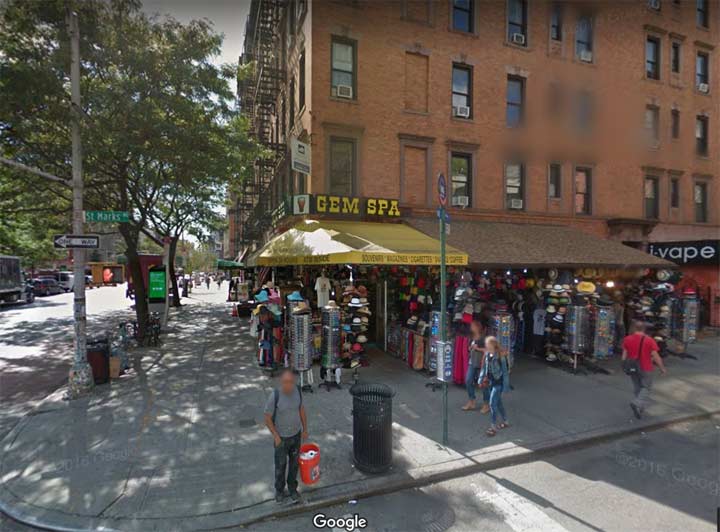
St. Marks Place, East Village
St Marks Place (there isn’t an apostrophe on the street signs) needs no introduction; it stands in for East 8th Street between Cooper Square and Tompkins Square Park. It’s been the countercultural epicenter of the East Village for decades, though it’s backslid into something of a tourist trap over the last couple of decades. A few years ago, I walked the street and reported what I found, with an emphasis on the mosaics of street artist Jim Power.
What I didn’t get into, though, was why exactly is it St. Marks Place and not plain East 8th Street here? The answer lies in issues of class and cachet. After all the street never fronts on the church it is named for, the ancient St. Mark’s Church-in-the-Bowery, one of Manhattan’s few remaining buildings constructed in the 18th Century, at 2nd Avenue and East 10th.

1867 Dripps Atlas plate
East 8th Street was laid out along with its parallel partners in the 1811 Commissioner’s plan, and in the subsequent decade its future route was surveyed, along with every other street in the grid plan, by John Randel, Jr.; in the 1820s the street was cut through and graded. Development in the form of the odd house or two began at that point, but the first real concentration of homes did not occur until the mid-1830s, when developer Thomas E. Davis began to implement plans to build groups of Federal-style brick houses along the present stretch. To attract potential buyers he renamed East 8th “St. Mark’s Place” for the already venerable church.
As Ada Calhoun puts it in her excellent St. Marks Is Dead: The Many Lives of America’s Hippest Street [W.W. Norton, 2015]:
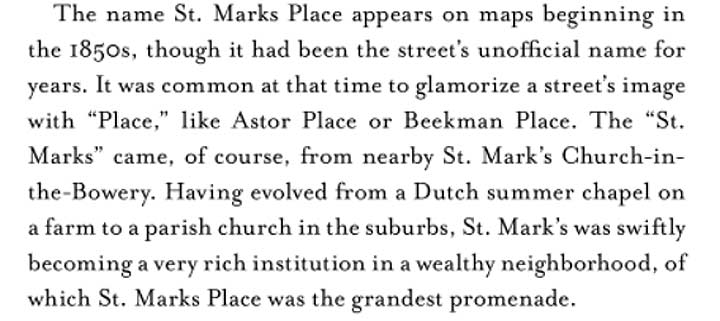
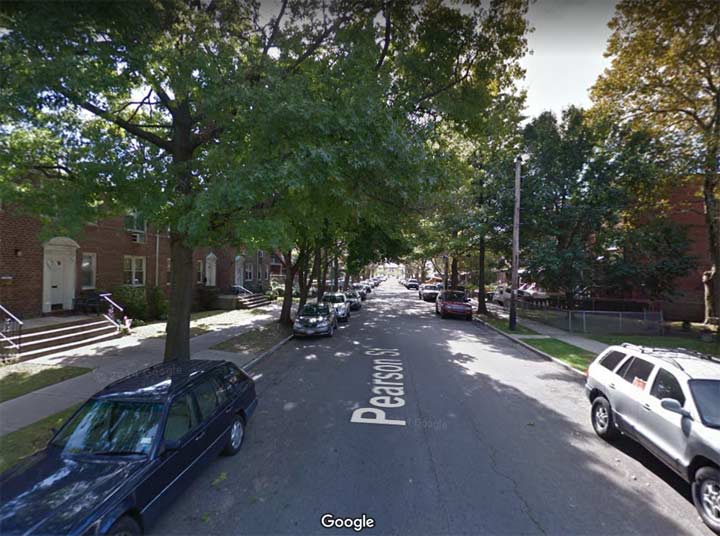
Pearson Street, Milll Basin
Pearson Street runs for just one block between Avenues T and U, inserted serendipitously (it seems) between East 56th and 57th Street. Why does it appear here?
In Mill Basin there is a change in the orientation of the street grid pattern. While the Flatbush plan is for East and West numbered streets (radiating east and west from West Street and McDonald Avenue) and lettered avenues to run generally west to east and from north to south, the Marine Park streets run from NW to SE. That pattern continues between Avenues T and U and then further east as you get past Ralph Avenue.
However, the East streets are spaced a little closer together as they change orientation at Avenue T. That means that by the time the numbered streets reach East 56th they can’t run together as they cross Avenue T anymore, unless an extra street is inserted.

1929 Belcher Hyde map
That street, as it turns out, is Pearson Street. This is the oldest map on which I can find it named; I have maps from the 1910s that show the planned grid but leave the streets unnamed. Note that East 56th on either side of Avenue T doesn’t run together. To make both sides of East 57th line up, Pearson was inserted. Who was Pearson? The answer probably lies in a dusty folder in Brooklyn Borough Hall somewhere, but it could have been an area property owner or an engineer or surveyor who worked on building the streets.
In 1929, while some houses had been built along East 57th, the streets were still unpaved and, south of Avenue T, likely unbuilt in 1929.

Senator Street, Bay Ridge
Senator Street runs from Colonial Road (where it’s stopped by Owls Head Park) east to 6th Avenue in Bay Ridge, inserted between 67th and 68th Streets. However, it’s not continuous; it runs east to 5th Avenue and the ancient former route of the colonial-era Kouwenhoven Lane. To stay on Senator Street, you need to turn right on 5th, then turn left on Senator Street.
The answer for this insertion is because, once again, the orientation of the streets changes subtly at about 66th Street from 4th Avenue west to the Narrows. This causes an extra space to open up north of 67th Street, and an extra street, Senator, was inserted by town planners to make up the difference. Without it, streets running east and west could keep the same number only with difficulty. In fact, two other streets, Wakeman Place (which could have been named 66th Street, as it occupies the same roadbed) and Mackay Place (which was inserted to fill an uneven plot between 70th and 71st) can also be found in western Bay Ridge.
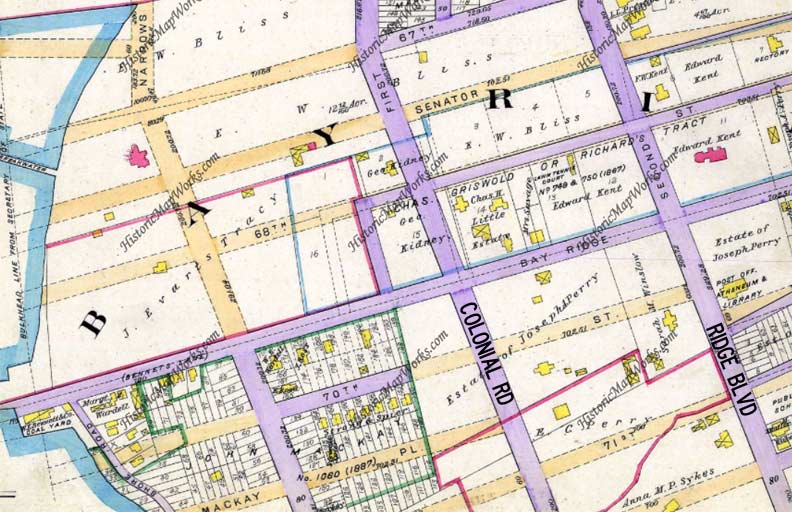
Robinson 1890 Kings County atlas
The names have been on the planning boards even in the 19th Century; on this map, the existing streets were shown in purple. In the early 20th Century, 1st Avenue and 2nd Avenue were renamed Colonial Road and Ridge Boulevard, respectively, likely at the behest of real estate developers. Senator Street was named for 6-term NY State senator Henry Cruse Murphy (1810-1882) a former owner of the Brooklyn Eagle and former City of Brooklyn mayor. He became a US Representative from NY State and an 1852 Presidential candidate. He was a co-founder of the Brooklyn Historical Society (formerly Long Island Historical Society) and owned the estate that became Owls Head Park. Some say the owl heads on the estate’s gateposts gave the park its name.
Mackay Place was named for a prominent resident, John W. MacKay (?-1902), who founded the Commercial Cable Company and participated in local Democratic politics. His granddaughter Ellin married Irving Berlin and was the inspiration behind the classic song and Frank Sinatra favorite “Always.” Wakeman Place runs alongside the Long Island RR Bay Ridge branch and that’s quite fitting because attorney Abram Wakeman (1825-1889) helped finance the Bay Ridge and Manhattan Beach Railroad lines before selling them to Austin Corbin; they later wound up with the LIRR.

Oliver Street, Bay Ridge
Remaining in Bay Ridge we find another Puzzlement, Oliver Street, which runs for a block between Marine Avenue and Shore Road, inserted between 92nd and 93rd Streets. The reason for its existence parallels that of Pearson Street: the street grid changes orientation, with differing spaces between streets. An extra street was inserted to maintain the overall integrity of the street pattern.
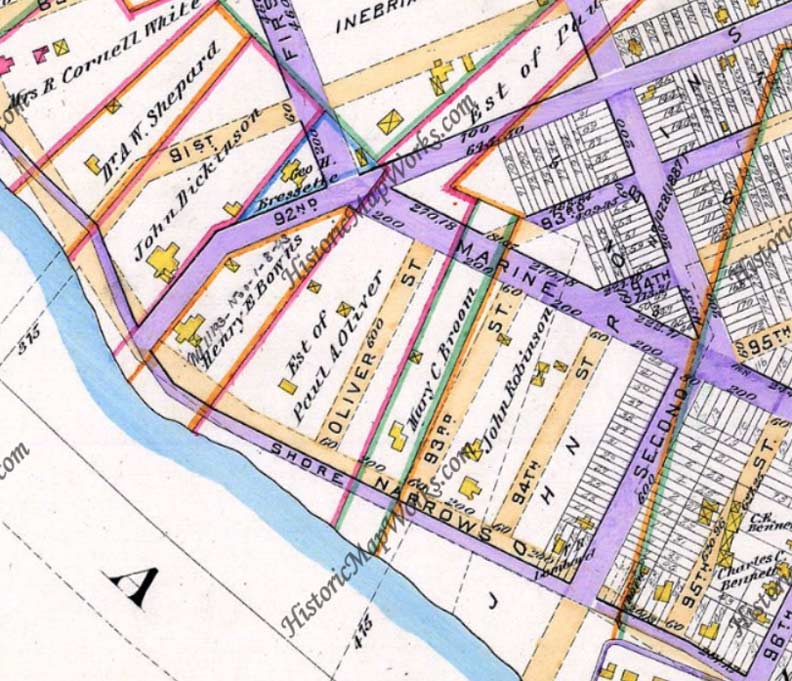
Robinson, 1890
The street was laid out to run through property owned by Paul Oliver and thus, received his name.
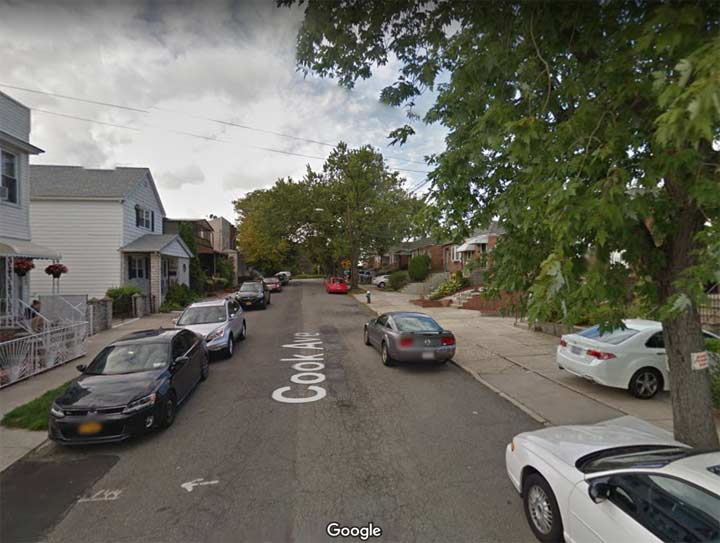
Cook Avenue, Middle Village
Cook Avenue kept its name, apparently, because the Queens Topographical Bureau ran out of available 69 numbered streets. The avenue runs for one block between 69th Avenue and 69th Road between 73rd Place and 75th Street. Here, Queens east-west streets feature multiple uses of the same number; there’s 69th Avenue, Road and Drive, in that sequence, but in this case, there’s enough space here for four 69s. (I believe the next designation after “Drive” in Queens is “Terrace”, but here, the Topographical Bureau chose to retain an old name)….

Belcher-Hyde, 1915
… and Cook Street was used for one block, with a change to Avenue. Further south, Edsall Avenue also survives along the LIRR Montauk branch for a few blocks, between 71st and 73rd Places. None of the other names on this 1915 map still exist.
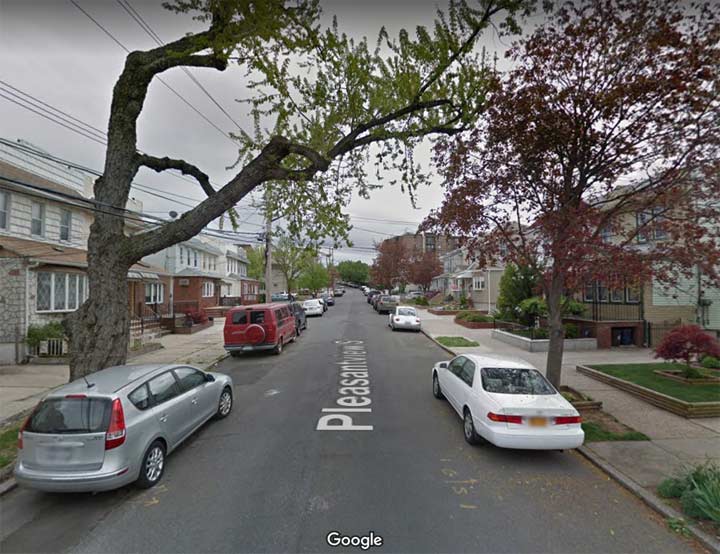
Pleasantview Street, Middle Village
There are a few streets that run athwart the overall grid pattern in Middle Village, south of Juniper Valley Park, and a couple of them have names instead of numbers. Pleasantview Street is one of them, running from Juniper Boulevard South at 74th Street south to Metropolitan Avenue. Street orientation is weird in these parts, with streets changing direction repeatedly. Were it to have a number, Pleasantview Street would be 73rd Street, but the Queens Topographical Bureau didn’t go in that direction.
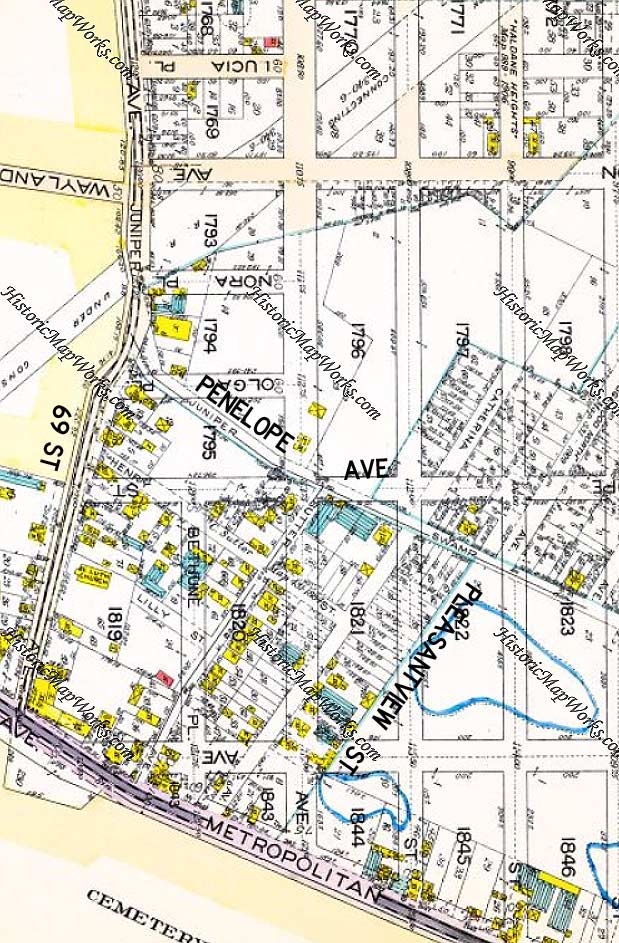
Belcher-Hyde, 1915
The beginnings of the present street pattern were in place in 1915. The Topographical Bureau wanted to impose a strictly oriented grid here; however, there were already a few established lanes here, and the grid wound up absorbing them, as all the existing properties couldn’t be bought and condemned. In a few years Pleasantview Street would be built along the edge of the pre-existing plot. It may take its name from an existing hill to its east, shown on the map, which may have been leveled off during construction.
Penelope Avenue, another named street that has been retained, originally ran along part of the twisting Juniper Swamp Road, which was eventually straightened out and renamed Juniper Valley Road.

Gray Street, Middle Village
Gray Street is another Middle Village street that had seemingly escaped the Topographical Bureau radar. Presently, it runs for two blocks from Juniper Valley Road south to 66th Drive just east of 75th Street, so it could have been named 76th Street, but wasn’t, for reasons only the QTB presumably knew.
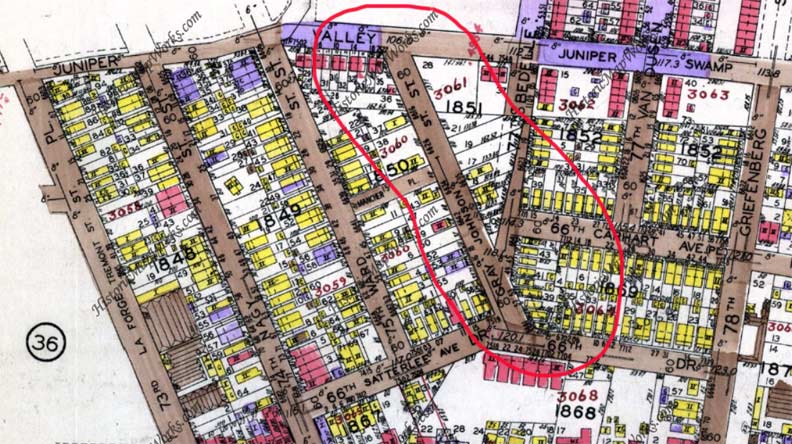
Gray Street is shown here on a 1929 Belcher Hyde atlas, midway through the street numbering project that would rename most streets in Queens from 1915-1930. At this time, street signs carried the new name in large letters, with the old name in smaller numbers underneath it. Gray Street was apparently Johnson Street at one time, and was parallelled by LaForge (73 Place), Nagy (74th St) and Ward (75th).
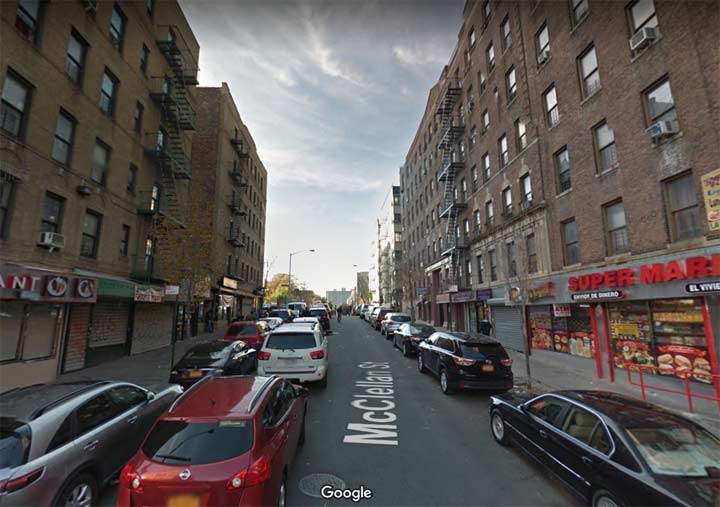
McClellan Street, Morrisania, Bronx
While other named street “puzzlements” arose out of numbered streets that are close together, The Morrisania section in the Bronx is a horse of a different color — numbered streets here are spaced widely apart, and various named streets have been inserted in between them to avoid extra-lengthy blocks. One of these is McClellan Street, which runs east from Cromwell Avenue to Morris Avenue between East 166th and 167th Streets.
Since McClellan Street turns up on Bronx maps before 1900, it likely doesn’t honor NYC Mayor George B. McClellan Jr., who served from 1904 to 1909 but rather his father, Civil War general George B. McClellan Senior, who clashed with President Abraham Lincoln and ran against him for president in 1864.
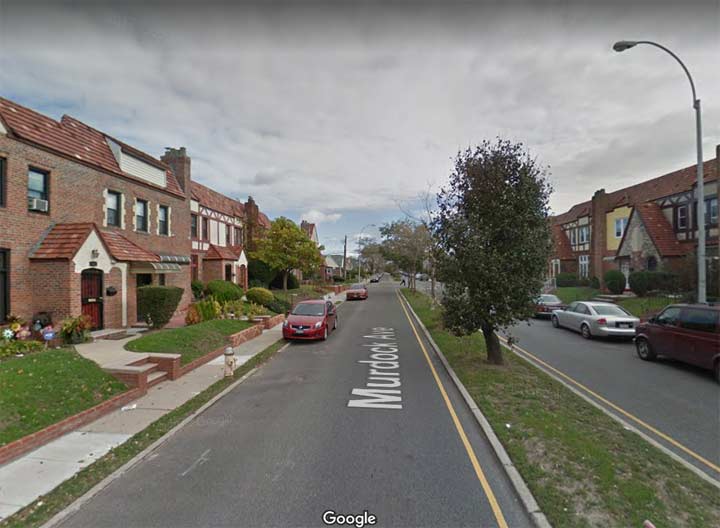
Murdock Avenue, St. Albans, Queens
While some of these “puzzlements” have readily available solutions, I’ve always wondered about the lengthy Murdock Avenue, which stands in for 114th Avenue between Linden and Merrick Boulevards all the way east to the Cross Island Parkway, which runs along the Nassau County border. My source maps going back to the 1920s show it as Murdock Avenue, but I have no idea why the street carries the name, and the internet is quiet. A lengthy session at the Queens library main branch might come up with an answer, but perhaps one of you know, and can mention it in Comments.
Check out the ForgottenBook, take a look at the gift shop, and as always, “comment…as you see fit.”
10/18/17

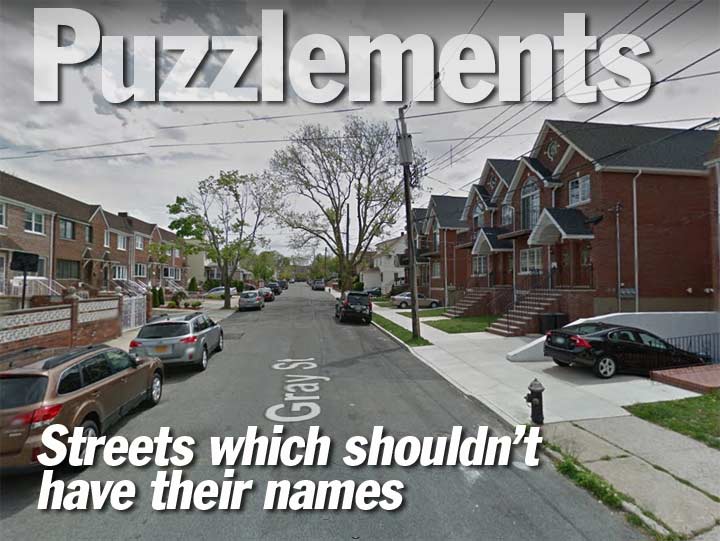
18 comments
I have another short street..In Flatbush……Clarkson Ave running almost from Brownsville, changes its name when it crosses Flatbush Ave at a slight angle and becomes Woodruff Avenue……Woodruff only runs a few blocks West and ends at the Parade Grounds…..
Nope. I’m talking about streets that are named amid an overwhelming preponderance of lettered or numbered streets.
Sorry, I understand..
I lived near Penelope and Pleasantview. Where Pleasantview St is overlaid on the map is now 72nd Street, with Pleasantview being a block east. Given the swampiness of that area, I suspect the blue circles on the Belcher-Hyde map were ponds rather than hills. Penelope is now a block north of where the name is overlaid on the map.
I forgot to mention that the blue rectangles on the Belcher-Hyde map represent greenhouses. Many grew flowers for use at the nearby cemeteries. A 1940 picture of the greenhouses at Sutter and Juniper Swamp Road (now 70th Street and Juniper Valley Road) can be found at the NYPL site.
East WillIston Ave. in Floral Park, Queens
how about Murray Street in Flushing?
Multipart series.
I still find it odd that St Marks Place never touched that church despite having that name, but after reading that, now I know why it got that name. However, I would have found it to make more sense if it was on the same street the church is. Then again, Bowery doesn’t go by that church either, but that’s a different story. This might be a guess, but maybe St Marks Place did at one time be at the church before that plan to have the numbered streets, but I’m just theorizing on this. As for the picture you showed of it, Gem Spa is the only place in Manhattan I know I can get an egg cream, because I don’t know any other places in the borough to get one. On a side note, I didn’t know until a month ago that Papaya King is now closed on Sundays, which is new to me.
Welling Court and Main Avenue in Astoria?
Welling Court is L shaped as it follows the outlines of the Halleck farm vegetable garden. The entire area used to be named Halleck’s cove after this family.
Thank you Kevin for sparking memories from St. Marks Place to Oliver St. in Bay Ridge.
Seton Place in Kensington, Brooklyn. It only runs 4 short blocks from 18th Avenue to Foster Avenue. Logically it should be ‘East 2 Street’ as it extends south from East 2nd at 18th Avenue. Prior to about 1969 it was ‘3rd Street’ (not East 3rd St), a remnant of the days when Parkville was it’s own little town. There was a ‘1st Street’, now East 8th St and a ‘2nd Street’ which was obliterated in the 1870s when Ocean Parkway was constructed. Some old maps show one block of 2nd Street surviving between Webster Avenue & 18th Avenue. Sort of where PS139 (the old Midwood Annex) is now.
Murdock Avenue: Belcher Hyde “Atlas of the Borough of Queens Easterly Part of Jamaica…”, 1918, shows Murdock Avenue mostly with dashed lines, between 113th Avenue and 115th Avenue which are also dashed lines. It runs from the railroad to the Nassau County line as it does today. So it was an exceptional name before it was actually opened! The confused street pattern between the railroad and Farmers Boulevard is also dashed and seems to be the product of uncoordinated real estate developments called “Hollis Manor” (north of Murdock) and “Morrell Park”. The short bit of Murdock Avenue west of the tracks is in solid lines but is called Tremont Street.
This does nothing to explain the name or why it was exceptional.
Murdock may have been the contractor building the street…
… continuing. Plate 10 adds a clue. This covers almost empty ground east of Farmers Boulevard– I guess the Belchers and Hydes anticipated pasting in a lot of buildings over the next few years. Double street names are shown, the new name in italics. North-south we have Fishkill 197th St St, and Hilburn 196th St St, for example. East-west, Leland 113th Av Av, but then Piermont Murdock Av Av. So the Murdock name does not pre-date the numbering but was applied during the same time as the numbering!
The supposed street grid in Manhattan south of 14th Street. In many cases there are numbered streets that either go nowhere, or become named streets such as Bond, Great Jones, etc. Also upper Manhattan has an unusual street layout with numbered streets going against named streets. Avenue’s A-G in Brooklyn in places received Brutish names as well as Road rather than Avenue. In Queens the so called grid totally makes no sense since some numbers are used as many as 4 times and other numbers are skipped, sometimes several consecutive numbers are skipped. No number street goes totally from North Shore to South Shore or from the Brooklyn line to the Nassau line. Many times these do not even line up. How about the Queens street numbers & addresses that sit in Nassau County. What about 4th Avenue in Manhattan or Central Park West, South, & North. Why no Central Park East?
Kew Gardens Hills, Queens, has numerous street-naming idiosyncrasies. The westernmost roadway in the neighborhood is called Park Drive East, but there is no corresponding Park Drive West anywhere. Jewel Avenue (originally Jewel Street) managed to keep its name long after the other named streets were converted to numbers. Vleigh Place is another anomaly. The east-west streets are numbered but they jump by threes – 153rd Street, 150th Street, 147th Street and then Main Street. There is no 144th Street.